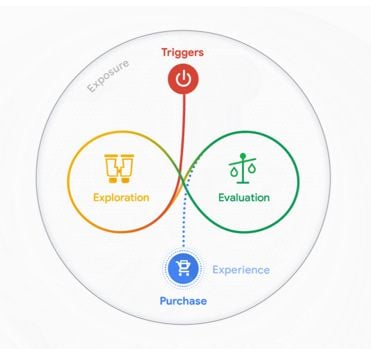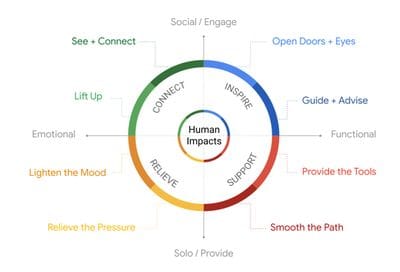8 elements of digital transformation to grow faster in 2020
)
According to Google, "over the last six months, businesses have embraced digital transformation and thrived. It's not just or even primarily about building a better e-commerce site (as important as that is). It's about using data and technology to inform your new product strategy, to alleviate uncertainty in your channel capabilities, to satisfy dynamic customer demand, and to meet customer needs with meaningful action."
Australia Post says,"2020 has been a year like no other for eCommerce. The latest statistics show that growth was up over 80% year on year (YOY) in the 8 weeks since the COVID-19 pandemic was declared by the WHO, making it clear that the industry has not only kicked up a gear, it has gone into overdrive."
How do you prepare your small business for the "new normal"? While the world has changed around us the decisions around business and marketing have remained somewhat unchanged. We still need to make decisions about what to invest in, what products and channel to use in your marketing strategy.
One great element is we now have more data and consumer signals, are better able to act on them, and can better than ever before.
Here are some of the elements of the digital transformation that has accelerated over the past 6 months.
1. Let data inform your new product strategy. You don't need to guess. Using crowd sourcing tools like social media you can ask your ideal audience what they want with surveys, polls and competitions and let these inform your product strategy going forward. Google Analytics can provide some great insights if you have it set up correcty too!
2.Change up your channel strategy. When hairdressers, airlines and restaurants were faced with uncertainty with their channel to market they had to innovate new channels or face no business. Those that innovated kept cash flow positive. Film studios used streaming instead of theater releases for new films, restaurants used take-out and packaged meals and airlines changed routes and partnered up with other competitors to offer more domestic flights.
3. Satisfy consumer demand. Millions of consumers have moved from offline to online purchases. Social distancing, self-isolation and the closure of bricks and mortar stores has meant online has become not just the preferred way to shop but arguably the only way to shop, prompting unprecedented online growth as retailers and shoppers alike adapt to a new normal. So far in 2020, we have seen more people shopping online than ever before up 31% in April to 5.2 million." Australia Post Report 2020, April.
4. Buy Local - there has been a significant voice around supporting local businesses with a number of projects aimed at supporting local manufacturers and small businesses. These include:
- Click for Vic - supporting Victorian businesses
- Spend with Us - supporting bush and rural businesses
- Melbourne Farmers Markets - supporting local markets
- Openfoodnetwork - farmers produce available for order every week
- Buy Aussie Now - online shopping for Australian brands
5. Move offline spend to online - small businesses have moved their traditional offline spend for trade shows and business development reps to online spend. Facebook ads, social media posts, search, email and SMS campaigns.
6. Keep it inspiring and personal. Using Google's data those brands ads that have keep their communications inspiring and very personal in terms of being target ted, found that these ads drove up to 30% higher click-through and more than 15% higher purchase intent above and beyond ads that already had basic personalisation.The ads worked not because they were personalized, but because they were meaningful.
7. Decoding the customer journey. As consumers we make thousands of decisions around purchasing around offline and online touch points. How do you ensure shoppers can  discover your brand when there are no physical stores? This is the question that many small businesses have had to answer over 2020. What if your supply chains are disrupted? There will always be another pandemic, recession or bush fire. It is how we build into our business models the flexibility to adapt to the environment and our customers that really matters. Those that are reviewing the customer journey quickly will always be on the front foot in business.
discover your brand when there are no physical stores? This is the question that many small businesses have had to answer over 2020. What if your supply chains are disrupted? There will always be another pandemic, recession or bush fire. It is how we build into our business models the flexibility to adapt to the environment and our customers that really matters. Those that are reviewing the customer journey quickly will always be on the front foot in business.
8. Deliver meaning. More than ever before it will be those that can deliver meaning to the customer experience that will stand the test of time with consumer loyalty. Delivering real value to customers requires a customer centric mindset. There is more involved than just that marketer strategy of high keywords and other lead generation tactics. What a consumer last did on your website is a transactional view. To understand a customers viewpoint you need to look along the entire customer journey at what their needs and aspirations are. These deep-seated needs are driving buyers intent but more than that by being helpful, inspiring and engaging businesses can gain real customer trust over time.
To learn more go to Google Slides here.
) Author:Danielle MacInnis
Author:Danielle MacInnis| Tags:Marketing StrategyBrand StrategyCustomer InsightMarketing technologyDigital Marketing |
Post comment




